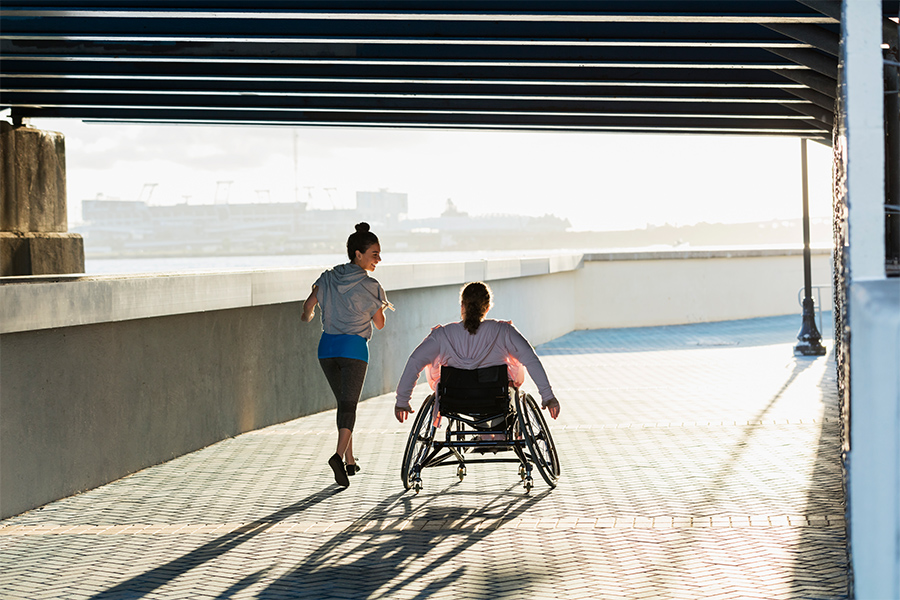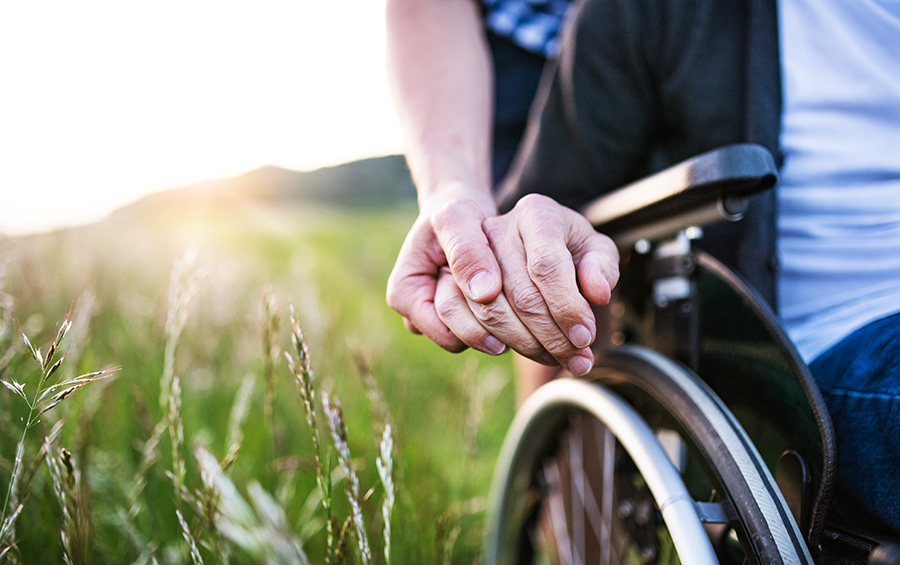One of the most common birth defects of the nervous system is spina bifida. Spina bifida is a neural tube defect that can occur anywhere along the spine if the neural tube does not close. This results in the backbone (that protects the nerves) not forming and causes damage to the spinal cord and nerves. According to the Centers for Disease Control and Prevention (CDC), about 1400 babies in the United States are born each year with spina bifida.
There are four types of spina bifida: occulta, closed neural tube defects, meningocele, and myelomeningocele. The symptoms of spina bifida vary from person to person, depending on the type and level of involvement. Most cases are mild and do not require special treatment. However, more serious cases involve nerve damage, which may affect mobility, bowel and bladder continence, orthopedic health, and skin health.
No two people with spina bifida are the same, but with proper and early intervention, reaching their full potential is possible!
Early Intervention for Bone Health
Early intervention is crucial for maintaining optimal bone health, especially for those with more severe neurological and motor disorders, who are more at risk of developing conditions like osteoporosis. During childhood and adolescence, bones are still developing and are more responsive to interventions like physical activity and proper nutrition.
Physical Activity
Exercise that is weight-bearing has been shown to build bone and slow bone loss. Activities that put stress on bones trigger calcium to deposit and increase the activation of bone-increasing cells. Weight-bearing exercises for those with spina bifida could include free weights, weight machines, medicine balls, wall pulleys, and Thera-band®.
Proper Nutrition
Vitamin D and Calcium are vital for healthy bones. The best sources of Vitamin D and calcium are dairy and non-dairy alternatives. Since constipation and urinary tract infections are common for those with spina bifida, it is recommended to drink plenty of fluids but choose beverages wisely. Make sure to drink plenty of water, limit fruit juice to 4 oz per day, and avoid drinking soda.
Milk is the best source of Vitamin D and calcium, but it is recommended to choose skim or 1% if over 2 years of age. If non-dairy is preferred, choose pea, soy, and almond milk (that is protein enriched), which will have similar protein content to cow’s milk.
Other great sources of calcium include:
- Yogurt and cheese
- Dark green leafy vegetables such as kale and spinach
- Protein-rich foods like tofu and salmon
- Citrus fruit juice such as orange juice
Vitamin D sources include:
- Fish such as salmon, tuna, tilapia, and trout.
- Dairy like milk and yogurt
- Vegetables including mushrooms
- Fruit juice such as orange juice.
Spending 20 minutes in the sun without sunscreen will also help your body to make Vitamin D, but to avoid sunburn, go outside early or late in the day.
Ask a registered dietitian if a multivitamin and Vitamin D or calcium supplement is necessary.
Quality of Life
Overall, the quality of life for those with spina bifida can reach full potential with early intervention. Inclusion of a diet adequate in calcium and vitamins, as well as weight-bearing exercise, can improve the chances of healthier bones.
To help meet these needs and the other challenges of spina bifida, get connected with various resources and support. Resources include but are not limited to healthcare providers, registered dietitians, community support groups, and reputable online sources.














